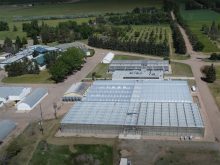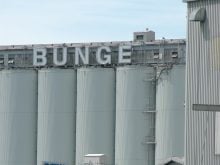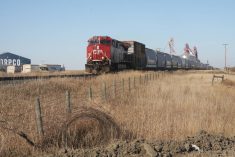The days of dumping used oil on the driveway to keep dust down are gone, or they should be.
Phil Wrubleski, executive director of the Saskatchewan Association for Resource Recovery Corp., said farmers have come a long way in their thinking about what to do with used oil.
The corporation was formed about 15 years ago, at the same time as Alberta’s Used Oil Management Association, and has since expanded to include organizations in Manitoba, British Columbia and Quebec. New Brunswick expects to begin a similar program in 2012.
Read Also

Heat waves combine sunshine and sinking air
As we continue our look at heat waves, I figured we should first define what they are by looking at the criteria Environment Canada uses to define heat events.
It grew from the Western Canadian Used Oil/Container/Filter Task Force.
Wrubleski said farmers’ attitudes have changed since SARRC first began going to trade shows in the 1990s to promote the program. Many had bad habits of oiling their roads or using used oil to burn garbage.
“Some people even used it for oiling the shingles on their garage, or just plain dumping it,” he said.
Farmers are now more aware of the environmental impacts of doing those types of things. They may even have to have an environmental audit done of their land or operation in order to sell it.
“You don’t want any of that nasty stuff around,” said Wrubleski.
Collection rates are now about 75 percent for used oil and 80 percent for filters. Both of these materials are considered hazardous.
Collection of oil containers, defined as those up to 50 litre capacity, is about 68 percent. The containers are not hazardous waste but always contain some oil and for that reason can’t be put into plastic recycling programs.
Farmers reuse many of these containers, especially the 20-litre pails that are handy for toting and storing things, but Wrubleski said they should be aware that once the pails crack or lose a handle they can and should be returned for recycling.
The numbers are better in Alberta: 83 percent of oil, 91 percent of filters and 85 percent of containers are returned.
In Manitoba, however, the numbers are lower: 75 percent of oil, 69 percent of filters and 49 percent of containers are collected.
There are several ways for farmers and rural residents to recycle oil and the associated products.
SARRC has 35 Ecocentres authorized to accept the products.
“They’re the ones that actually have a pump in them so you can pump off 205-litre drums that farmers bring in,” Wrubleski said.
Municipalities, retailers or bulk stations, for example, also collect the material in return for an incentive paid by SARRC. Many of the bulk dealers also accept the larger 110- and 205-litre drums that the incentive program does not.
In total, there are about 300 collection facilities in the province, al-though not all of them accept all three materials.
Or, residents can call collectors to come to their farms if they have larger quantities. Several farmers could get together to recycle materials to make it economical for a collector to come out. Wrubleski said one farmer who has a larger tank could offer to collect for his neighbours and act as the base of operations.
Alberta has more than 400 collection centres.
Manitoba has 53 Ecocentres, plus 16 other licensed rural depots and 10 in Winnipeg.
All of the facilities can be found through the provincial links at www.usedoilrecycling.com.














